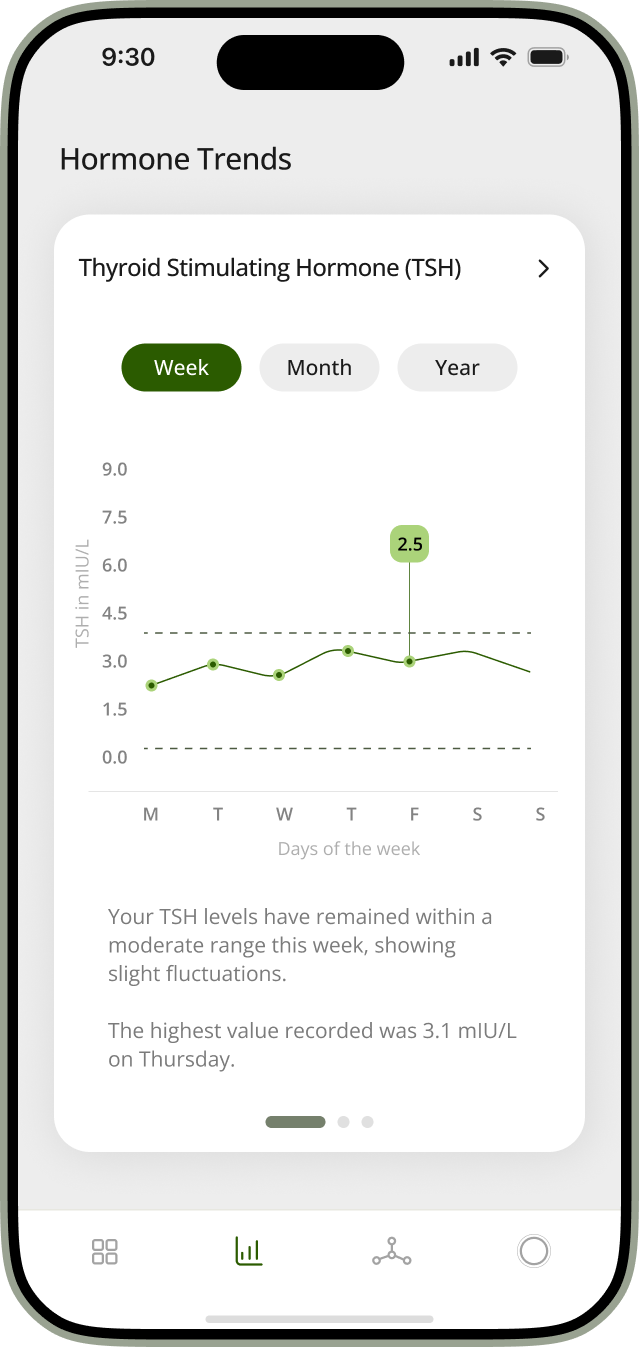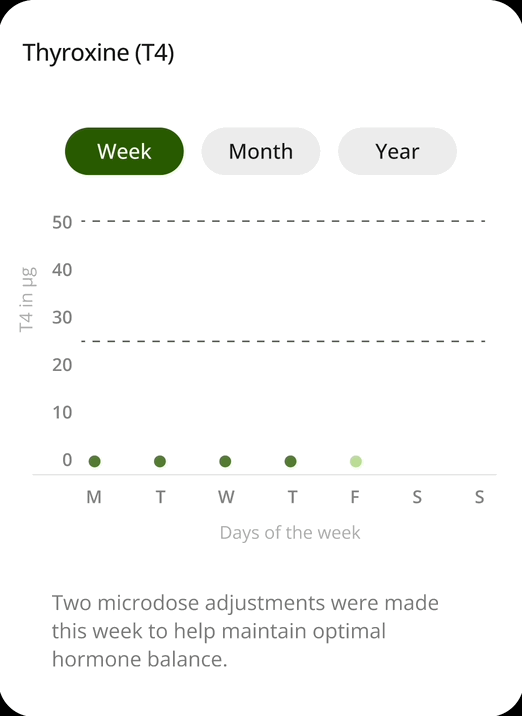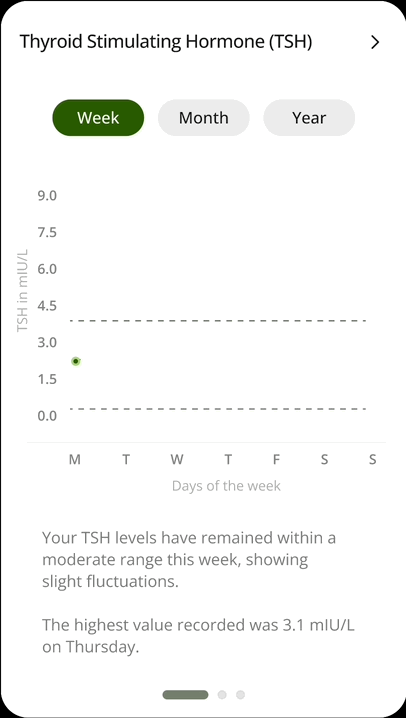Reimagining chronic thyroid management through system thinking.
OVERVIEW
My Roles
Duration
User Research
System Design
Experience Design
Visual Design
4 weeks
A bio-digital system that helps patients manage hypothyroidism through real-time monitoring, adaptive dosing, and AI-assisted care.
This project introduces a new way to manage hypothyroidism by addressing key gaps in traditional care, delayed lab-based monitoring, one-size-fits-all medication, and patient burden.
Thryv is a bio-digital system that integrates bioelectronic sensing, digital twin modeling, and AI agents to deliver personalized, proactive care for hypothyroidism.
SOLUTION AT A GLANCE
Current hormone levels and dosage are shown in real-time.
Visual graphs track hormone and dosage trends over time.
AI agent simplifies scheduling and keeps doctor and patient in sync.
IMPACT AND OBSERVATIONS
Found the system reassuring. She felt more confident knowing that there is less room for error
25-year-old
Initially hesitant, but felt more comfortable after learning doctors remain involved and approve dose changes.
58-year-old
UNDERSTANDING USER WITH HYPOTHYROIDISM
After conducting user interviews and secondary research, I developed a persona living with hypothyroidism to guide the design of the system.
Dependent on daily medication like levothyroxine or synthetic T4 to maintain normal function.
Relies on periodic blood tests, usually triggered by worsening symptoms.
Main Pain Points
The current system for managing hypothyroidism is reactive and fragmented, relying heavily on daily self-medication, periodic blood tests, and symptom monitoring.
RESEARCH OUTCOMES

How might we develop a system that enables continuous thyroid monitoring, thus reducing the need for daily self-medication, blood tests, and reliance on symptom tracking.
REFRAMING PROBLEM AS AN OPPORTUNITY
The Thryv implant is placed in the chest or thoracic cavity through a minimally invasive outpatient procedure.
PROPOSED DEVICE
This concept is inspired by ongoing research on Implantable devices from Carnegie Mellon University.
The implant continuously senses hormone levels and uses biosensors and therapeutic cells to adjust T4 dosing as needed. A digital twin and AI agent analyze this data in real time, enabling personalized guidance for the patient and doctor-approved treatment decisions.
PROPOSED SYSTEM
Reviewing hormone levels and tracking the corresponding T4 dosage over time.
SCENARIO 1
Thryv helps Sharon to understand her thyroid health at a glance. She can see how her hormone levels are tracking over time, compare recent doses, and feel confident knowing the system is actively adjusting to her body’s needs, all without waiting for symptoms or lab results.

Detecting a rising TSH trend and receiving a timely dose adjustment to prevent symptoms from returning.
SCENARIO 2
Thryv helps Sharon stay ahead of her symptoms by detecting subtle changes in her hormone patterns.
When her TSH levels begin to rise, the AI agent notifies her of a doctor-approved dose adjustment and explains the reason, giving her clarity, confidence, and peace of mind.

Thryv reminds Sharon when her implant check-up is due and helps her schedule it with just a tap.
By syncing with her calendar and her doctor’s availability, the AI agent makes routine care effortless and easy to manage.
Staying on Track with Routine Check-ups
SCENARIO 3

Test the app with real users and healthcare providers.
Explore connections with wearables like weight scales or health trackers.
Refine, test, and connect for everyday reliability
FUTURE STEPS




















